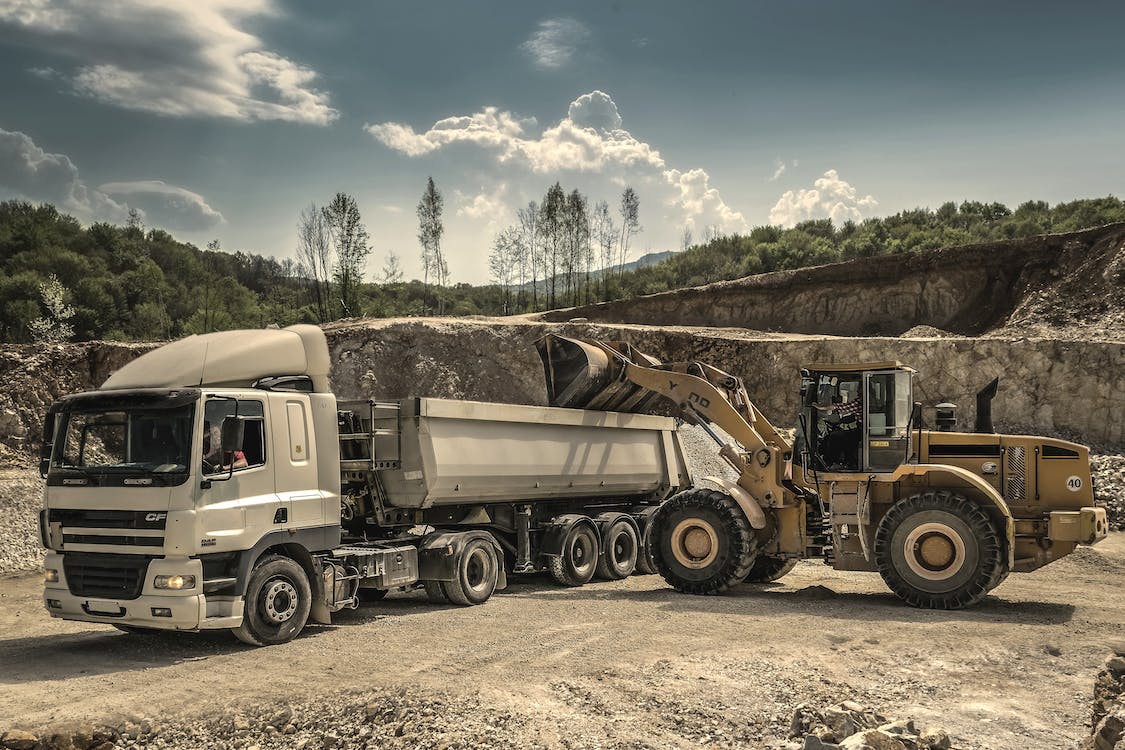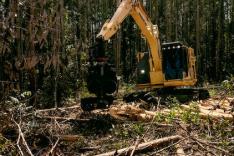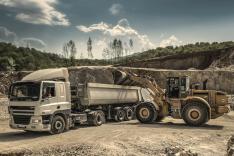Remote Data Ecosystems: Gathering Data
Series Overview
This article is the second in a series about what it takes to deploy a fully functioning remote data ecosystem for your organization. Anywhere you have assets in the field, whether it’s machinery, people, tools, light vehicles, or specialized equipment, those assets are generating information that could be valuable or critical to running a successful and efficient operation. Over the past few decades, connectivity and communications systems have improved to the point that there is no longer an excuse for not having that kind of information at your fingertips when you need it.
Go read and bookmark Part One (introduction) to quickly find any article in this series.
Remote Data Ecosystems Part 3 - Moving Data
Remote Data Ecosystems Part 4 - Transforming Data
Unfortunately, a lot of people in decision making roles don’t have the expertise to set up a data ecosystem, and they rely on technology partners, who often take advantage of the knowledge gap. GSE believes in transparent business relationships, because well-informed customers and partners make better long-term decisions. For that reason, we have created this series to make sure everyone understands the functional components of a data ecosystem, and how a technology partner like GSE can help you build the one that best suits the budget and needs of your organization.
Part Two: Gathering Data in the Field
Understanding your Asset Mix
Understanding your asset mix is foundational in the journey of gathering data from the field. This initial step necessitates an in-depth awareness of the specific assets from which data will be collected. These assets can range from people and vehicles to specialized equipment integral to operations. Recognizing the diversity and specificity of each asset is pivotal. This acknowledgment aids in tailoring the data gathering process to the unique needs and characteristics of each asset. The nuanced understanding of each asset’s role and utility helps in formulating a robust strategy for data collection, ultimately enhancing the quality and relevance of the information gathered.
Nested Case: Data Gathering for Disaster Cleanup
Asset Mix for Disaster Cleanup
In this case study, we consider a Disaster Cleanup Company (DCC) that specializes in clearing debris and rehabilitating areas affected by natural disasters. DCC operates a fleet of skid steers, loaders, grinders, and trucks, alongside a team of skilled personnel tasked with operating this equipment and managing the cleanup sites.
For DCC, the diverse asset mix includes both human resources and a variety of specialized equipment. The personnel operate equipment such as skid steers, loaders, and grinders, and manage the trucks that transport materials to and from the site. Understanding this mix is crucial for DCC, as it enables the company to tailor its data gathering strategy to the unique characteristics and operational requirements of each asset, ensuring that the collected data is relevant and actionable.
Which Data Points to Gather
The identification of data points to be gathered is a cornerstone in building a holistic and insightful view of operations. It’s essential to discern which pieces of information are integral for decision-making, even in the absence of on-site presence. Equally vital is the determination of data points that are relevant for performance and efficiency reviews, as well as for refining operational processes. Information pertaining to safety and maintenance, as well, is indispensable and serves as a proactive measure to address potential issues.
Alert-triggering information is particularly valuable, offering the ability to preemptively identify and mitigate risks, thus contributing to enhanced operational efficacy. Every asset within the mix has the potential to relay specific, valuable information. Identifying what precisely your assets can communicate is not merely an exercise in data accumulation, but a strategic approach to gather information that is relevant, actionable, and aligned with organizational objectives.
Nested Case: Data Gathering for Disaster Cleanup
DCC Targets Actionable Insight
Given the nature of DCC’s operations, several data points are identified as valuable. These include:
- Location and operational status of each piece of equipment.
- Personnel locations and task progress.
- Load capacity and transportation schedules of the trucks.
- Safety incidents or hazardous conditions at the site.
- Equipment maintenance schedules and instrument panel readouts.
These data points are integral for real-time decision-making, safety monitoring, performance and efficiency reviews, and process improvement. They enable DCC to manage its assets effectively, respond promptly to any incidents, and optimize the overall cleanup process.
Sensor Technology and Packaging Hardware
Understanding sensor technology and packaging hardware is a crucial step in the process of data gathering. It necessitates knowledge of which sensors are optimal for the types of information needed, and how to effectively interface with these sensors to extract data. Configuring the tracking unit to capture the desired data is an intricate task, requiring a comprehensive understanding of the equipment's capabilities and the objectives of the data gathering initiative.
Once the data has been gathered, packaging it for transmission is another nuanced aspect of the process. This involves ensuring the integrity and security of the information while optimizing it for transmission. The packaging and transmission of data is about balancing security with efficiency, accuracy, and timeliness, ensuring that the information flows seamlessly from the field to your fingertips.
Nested Case: Data Gathering for Disaster Cleanup
Sensors Track Logistics, Loads, and Maintenance
To accurately and efficiently gather the identified valuable data points, DCC integrates a variety of sensor technologies tailored to its diverse asset mix. GPS trackers are affixed to every piece of equipment, vehicle, and also provided to personnel, ensuring real-time location monitoring. This precise tracking facilitates efficient task progress monitoring and optimizes personnel and equipment movement, drastically minimizing downtime and enhancing productivity.
Additionally, load sensors are installed on trucks, a pivotal move to constantly monitor and manage the weight of the transported materials. This data is vital, not just for logistical efficiency, but also for compliance with road weight restrictions and safety regulations, thereby mitigating the risk of infractions and ensuring the well-being of both the assets and the surrounding community.
Diagnostics sensors on machinery like skid steers, loaders, and grinders play a critical role in preemptively identifying potential operational issues or required maintenance. This proactive approach to equipment health reduces the likelihood of unexpected breakdowns, prolongs the life of the equipment, and ensures that operations continue seamlessly.
GSE Can Help
GSE specializes in remote data ecosystems, and the domain knowledge we have developed over the years has made us an expert in hundreds of sensor technologies, satellite terminals, and intelligent data gathering devices. We know what can be done, and if what you need to do can’t be done with what exists on the market, we can help you develop something that can fill the gap.
One of the benefits of having GSE as a technology partner is that we work with every manufacturer’s hardware in spite of the fact that we produce our own data gathering devices. We know that everyone’s budget and needs are different, and that not everyone can leverage devices like the GSatMicro or GSatSolar Series. We also know that a lot of people have already invested in hardware for gathering data, and that they need help integrating that hardware into a remote data ecosystem.
As always, the best advice we have for you is to reach out to us directly, and let us help you understand if you have the data strategy that is best for your business, and then how you can invest in the right hardware solution to bring that data strategy to life.
Next up: Moving data from the Field
The next article in this series will dive into the network component of a remote data ecosystem. Because GSE specializes in satellite, we will be diving into the capabilities and limitations of each network, and explaining how your network choices could affect the hardware strategy, and vice-versa. These articles build on each other, so we’re excited to have you along for this educational journey.






